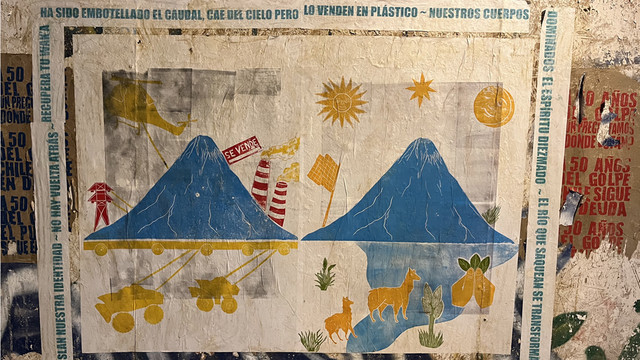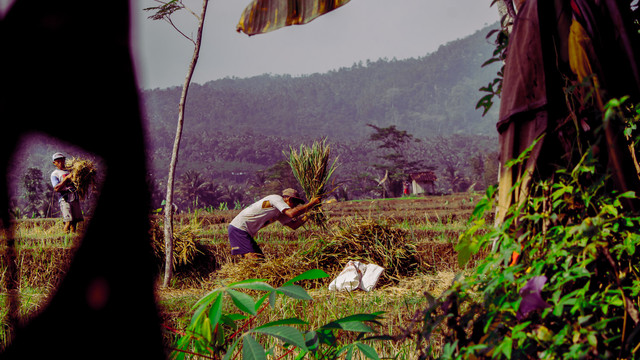Artisanal gold mining in Mali: making gold shine for the people of Gouandiaka
A new project in Mali is exploring how to improve the traceability of revenue generated from artisanal gold mining and advance local development.


The opening of new artisanal gold-mining pits in Kalako village (Photo: copyright Aboubacrine AG, Publiez Ce Que Vous Payez Mali)
In the rural commune of Gouandiaka in the Sikasso region of southern Mali, artisanal gold mining has been practiced for centuries. It is an integral part of the region’s socio-economic system and a way of life for the communities who live there.
Artisanal gold mining is governed by customs, practices and beliefs that all communities observe and adhere to – local and Indigenous communities alike.
The negative environmental impacts of artisanal gold mining are well documented, so too the exploitation of children and the accidents that regularly occur on extraction sites. But for the people of Gouandiaka it is a main source of income.
When good practices are deployed, income from artisanal gold mining can help improve living conditions of local people. This is the case in the village of Kalako, one of the 28 villages making up the Gouandiaka commune.
A traditional system for policing and distributing revenues
In Kalako, the artisanal gold mining activity is governed by the traditional authorities that have laid down a set of rules. The rules are enforced by the Tomboloma people who police the artisanal gold mining sites.
The Tombolomas provide security and ensure the site owners pay the village 10% of the income they receive from artisanal gold mining. The income generated from this ‘village tax’ is distributed according to a scheme agreed by the village.
Fifty percent of the village tax compensates the landowners of the mining sites. The remaining 50% is used to carry out social projects in the village, to pay the Tombolomas and for restoring old artisanal gold mining sites.
In Kalako, the income from artisanal gold mining has been used for several local development projects including building a bridge and a water tower; buying four combine harvesters (two for rice, two for maize); building six classrooms in the local school and paying the teachers’ salaries. The tax has also been used to restore an old artisanal gold mining site.

Water tower built by the village of Kalako using revenue from artisanal gold mining (Photo: copyright Sinaly Bouaré, Fondation pour le Développement du Sahel)

Bridge built by the village of Kalako using revenue from artisanal gold mining (Photo: copyright Sinaly Bouaré, Fondation pour le Développement du Sahel)
Improving the traceability of gold to generate more profits
Despite the presence of the Tombolomas on the extraction sites, a significant proportion of the gold escapes the gold collection circuit set up by the village.
Although the Tombolomas are numerous, they cannot monitor the gold mining sites and production at all times. Some gold miners do not declare all the gold they produce to avoid the village tax.
Improving the traceability of gold – tracking its journey from mine to consumer − would increase the income for the mining villages.
In Gouandiaka, a consortium of NGOs comprising the Fondation pour le Développement du Sahel (FDS) (in French), the Malienne Publiez Ce Que Vous Payez coalition (Publish What You Pay) (in French) and IIED is striving to improve traceability of the artisanal gold.
This Greater Value for Gold project, supported by the European Partnership for Responsible Mining (EPRM), seeks to give rural communities in Mali that depend on artisanal gold mining, and specifically those in the commune of Gouandiaka, the tools they need to turn artisanal gold mining into a genuine lever for local development.
The project aims to support artisanal gold miners and local authorities to set up central artisanal gold purchasing units. These centres will be dedicated to preventing gold from being removed fraudulently from the sites and helping increase the income of villages and artisanal miners.
The project also supports gold miners and other players in the artisanal gold value chain to adopt good practices. Examples include eliminating the use of toxic products such as mercury from mining sites, ensuring the revenues from the gold do not help fund armed groups, reducing the environmental impact and, finally, initiating reforms at national level to improve governance.

Village representatives from the commune of Gouandiaka (Photo: copyright Aboubacrine AG, Publiez Ce Que Vous Payez Mali)
Agreed actions
Project representatives met in late 2023 to identify actions for improving the traceability of artisanal gold mining products and for better sharing the revenue generated.
These included:
- Appointing representatives from Gouandiaka to visit the neighbouring commune of Masioko to learn from their experience in setting up and managing a central purchasing office.
- Greater involvement of women's organisations in the commune to ensure women participate fully in project discussions.
- Training Tombolomas in good environmental practice and in the traceability of artisanal products. The tombolomas can pass on this training to large numbers of gold miners.
- Involving artisanal gold buyers' associations in discussions on setting up buying groups so they can work together to solve any bottlenecks.
- Raising awareness among gold miners and buyers operating in Gouandiaka to obtain support for the project to set up a central buying office and adopt good practice in the mining and marketing of artisanal gold.
- Updating the commune's register of gold miners and gold buyers operating in Gouandiaka to improve monitoring and facilitate the implementation of awareness-raising initiatives on issues and challenges related to artisanal mining.
There was strong support for the initiative from meeting participants who expressed their willingness to work together so better traceability of gold mining products becomes a reality in Gouandiaka.
It is hoped that the initiative will advance growth and development in Gouandiaka – improving new roads and structures and creating new ones, to facilitate the movement of people and their goods, and the improvement of health, education and electricity services.
Over the coming months we’ll be sharing updates as the action agreed by the Gouandiaka community and the project consortium are implemented.
With thanks to Eric Bisil for his contributions to this insight.



